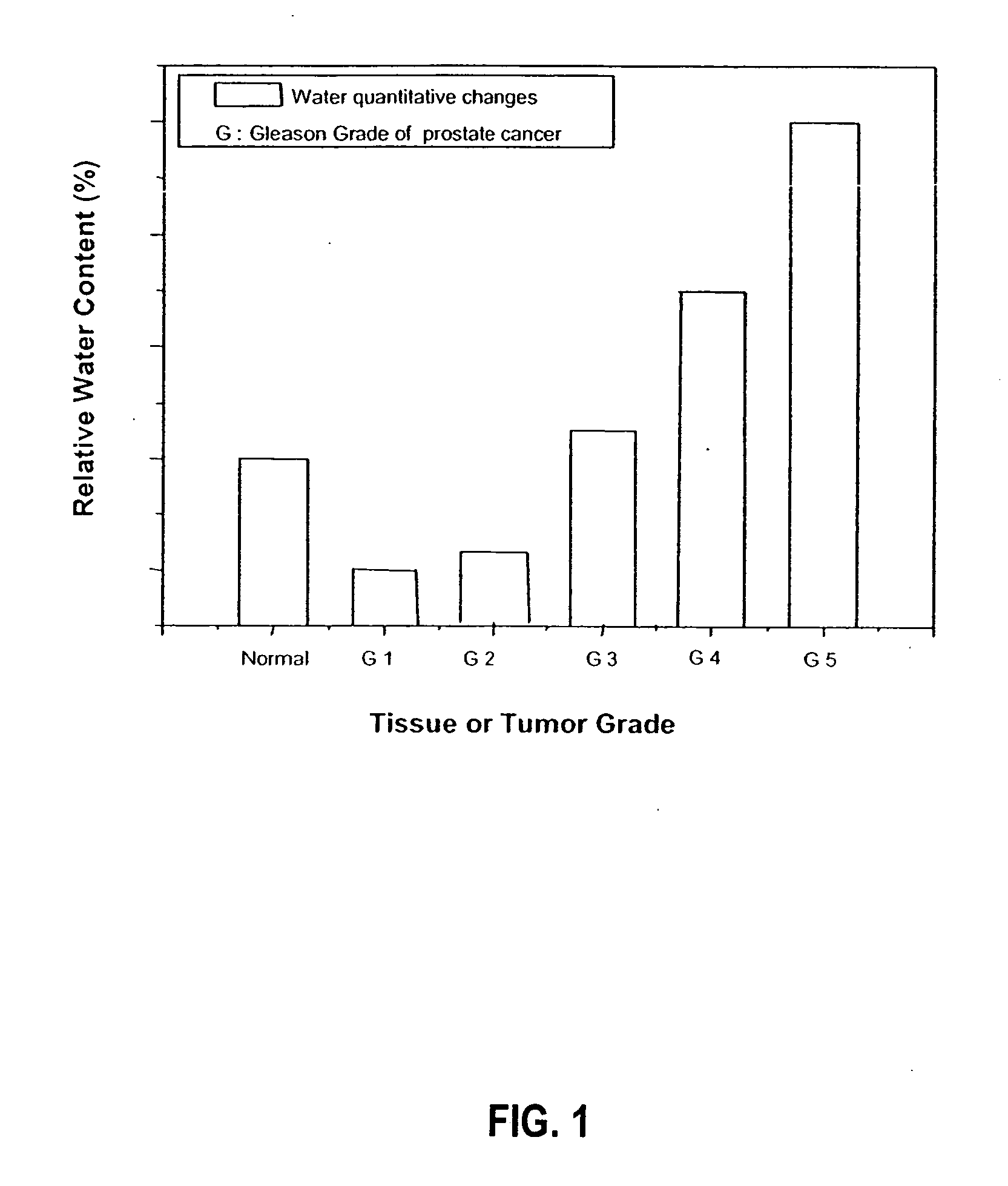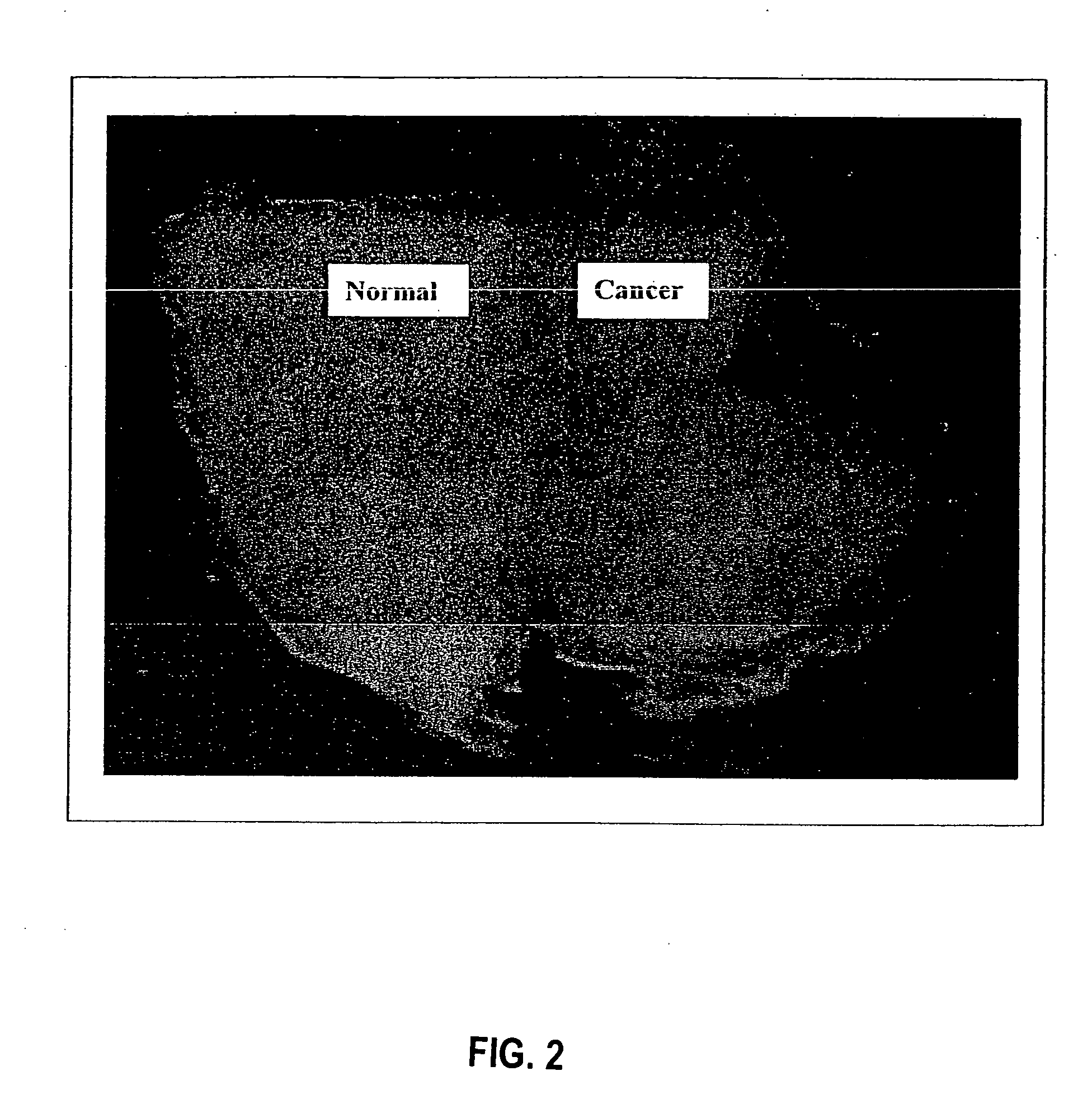Detecting human cancer through spectral optical imaging using key water absorption wavelengths
a technology of optical imaging and human cancer, applied in the field of spectral optical imaging methods, can solve the problems of limited detection capabilities, limited contrast, and increased risk of prostate cancer, and achieve the effects of reducing the detection accuracy of cancerous tissue, and increasing the risk of prostate cancer
- Summary
- Abstract
- Description
- Claims
- Application Information
AI Technical Summary
Benefits of technology
Problems solved by technology
Method used
Image
Examples
Embodiment Construction
[0038] The most abundant constituent of tissue is water. Approximately 78% of the human body is water, with the effect that water is a universal solvent for most biological tissues. At the molecular level, one interesting characteristic of water is that it is a polar substance, such that one portion of the molecule carries a negative charge and another portion carries a positive charge. This property is important in the context of cancer diagnosis. Cancerous tissues have a lower degree of organization and different water content relative to normal tissues. In cells, water is essential for converting mechanical energy generated by contractile proteins into chemical energy that is useful for various metabolic processes. Regulating water volume within a living cell, contractile proteins mechanically control ion selectivity, ion accumulation, and electron transport in mitochondria. When the availability of water in the cell is increased, this causes a corresponding increase in the diele...
PUM
 Login to View More
Login to View More Abstract
Description
Claims
Application Information
 Login to View More
Login to View More - R&D
- Intellectual Property
- Life Sciences
- Materials
- Tech Scout
- Unparalleled Data Quality
- Higher Quality Content
- 60% Fewer Hallucinations
Browse by: Latest US Patents, China's latest patents, Technical Efficacy Thesaurus, Application Domain, Technology Topic, Popular Technical Reports.
© 2025 PatSnap. All rights reserved.Legal|Privacy policy|Modern Slavery Act Transparency Statement|Sitemap|About US| Contact US: help@patsnap.com



